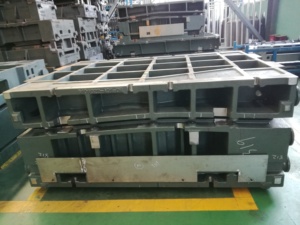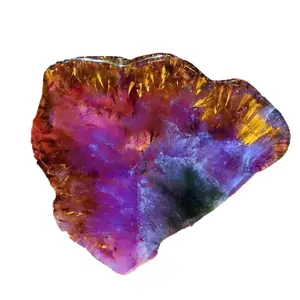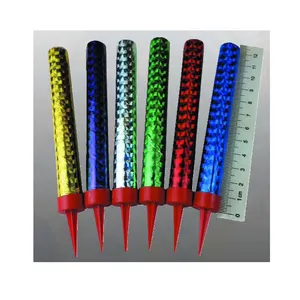Popular en tu industria











MCD00168 6 unids/set de mariposas de Metal muere de corte para Scrapbooking álbum tarjetas de arte decorativo de Metal de corte muere
EUR 0.4543 - EUR 0.5377
Pedido mínimo: 50 piezas
Envío por pieza: EUR 0.584







Troqueles de papel de aluminio para troquelado de tarjetas, troqueles de Metal para álbum de recortes, artesanías hechas a mano recicladas
EUR 0.7973 - EUR 1.16
Pedido mínimo: 200 piezas
Envío por pieza: EUR 0.1669







Molde de troquel para estampado de metal, para piezas de carrocería de coche, de alta calidad
EUR 2,780.94 - EUR 4,171.41
Pedido mínimo: 1 pieza
Envío por pieza: EUR 489.45







Moldes de fundición a presión de aluminio de alta calidad para bloques de motor automotriz Molde automático
EUR 92.70
Pedido mínimo: 1 conjunto







Troqueles de corte láser para artesanía de cuero, acrílico, diseño personalizado, NO MOQ
EUR 0.0927
Pedido mínimo: 1 pieza
Envío por pieza: EUR 11.38






Plantilla A4 de diseño personalizado, papel para álbum de recortes DIY, sobre de invitación, caja de dulces, troqueles de corte de metal de carbono para álbum de recortes
EUR 0.9178 - EUR 6.48
Pedido mínimo: 50 piezas
Envío por pieza: EUR 0.8807


AAGU-troqueles de Metal de acero al carbono con espejo redondo Irregular, plantillas en relieve, decoración de fotos, álbum de recortes
Listo para enviar
EUR 0.927 - EUR 1.58
Pedido mínimo: 1 pieza
Envío por pieza: EUR 4.18






Troqueles de estampación SPHC, troqueles de corte de placa de acero, máquinas de estampación de metal, en venta
EUR 926.98 - EUR 9,269.78
Pedido mínimo: 1 conjunto






Máquina dobladora de alta precisión personalizada de fábrica, herramientas de freno de prensa de molde, troquel para corte de Metal
EUR 55.62 - EUR 60.26
Pedido mínimo: 1 pieza
Categorías principales
Sobre troquel de corte para metal
Compra atractiva y sobresaliente. troquel de corte para metal en Alibaba.com para todo tipo de decoración y regalos a precios y descuentos fascinantes. Estos robustos y alucinantes. Las colecciones de troquel de corte para metal comprenden muchos artefactos y esculturas distintos que pueden encajar en cualquier tipo de decoración interior y exterior. Estos fantásticos. troquel de corte para metal son esculturas y figuras de intrincado diseño que muestran una artesanía impresionante y pueden renovar sus decoraciones de manera impecable.
La diversa gama de. troquel de corte para metal disponibles en el sitio están hechos de productos resistentes, sostenibles y de óptima calidad, como latón, aleación de zinc, hierro y otros metales que duran mucho tiempo y son resistentes a todo tipo de impactos externos. Estos inevitables. troquel de corte para metal se platean, luego se moldean y finalmente se colorean para ofrecer artefactos, formas y figuras impresionantes. Los productos son ecológicos y vienen con suaves toques finales. Estas. troquel de corte para metal son livianos pero lo suficientemente resistentes y están disponibles en diversos estilos que coinciden con distintos gustos étnicos regionales.
Alibaba.com ofrece una línea completa de. troquel de corte para metal que son deslumbrantes y accesibles en varios colores, tamaños, formas, diseños, figuras y calidades de materiales para combinar con su decoración interior o exterior. Estas. troquel de corte para metal se conservan bien y se pueden personalizar por completo según su estilo, requisitos y preferencias. Estas. troquel de corte para metal también se utilizan como recuerdos y regalos maravillosos para sus seres queridos.
Puede elegir sus productos favoritos de la amplia gama de. troquel de corte para metal que se adapten perfectamente a sus requisitos y presupuesto. Estos productos están disponibles como pedidos OEM junto con empaques personalizados. Son productos certificados por ISO, CE, SGS que garantizan la calidad.
La diversa gama de. troquel de corte para metal disponibles en el sitio están hechos de productos resistentes, sostenibles y de óptima calidad, como latón, aleación de zinc, hierro y otros metales que duran mucho tiempo y son resistentes a todo tipo de impactos externos. Estos inevitables. troquel de corte para metal se platean, luego se moldean y finalmente se colorean para ofrecer artefactos, formas y figuras impresionantes. Los productos son ecológicos y vienen con suaves toques finales. Estas. troquel de corte para metal son livianos pero lo suficientemente resistentes y están disponibles en diversos estilos que coinciden con distintos gustos étnicos regionales.
Alibaba.com ofrece una línea completa de. troquel de corte para metal que son deslumbrantes y accesibles en varios colores, tamaños, formas, diseños, figuras y calidades de materiales para combinar con su decoración interior o exterior. Estas. troquel de corte para metal se conservan bien y se pueden personalizar por completo según su estilo, requisitos y preferencias. Estas. troquel de corte para metal también se utilizan como recuerdos y regalos maravillosos para sus seres queridos.
Puede elegir sus productos favoritos de la amplia gama de. troquel de corte para metal que se adapten perfectamente a sus requisitos y presupuesto. Estos productos están disponibles como pedidos OEM junto con empaques personalizados. Son productos certificados por ISO, CE, SGS que garantizan la calidad.




























